MISSOURI
I am a border ruffian from the State of Missouri. I am a Connecticut Yankee by adoption. In me you have Missouri morals, Connecticut culture; this, gentlemen, is the combination which makes the perfect man.
—Mark Twain
And that road goes on and on into the sunset.
And my destiny is bound to move me on.
—Missouri, Movin’ On
Every time my bus wheels hit the bootheel
There’s no limelight and I’m alright
‘Cause I’m almost home
Where they love me, where they know me
Where they show me back in Missouri
—Sara Evans, Missing Missouri
Rivers
The story of Missouri is the story of its rivers. Native Americans named them, fought over them, settled on their banks, and taught the French, Spanish, English and Americans all they knew of them. Many Europeans risked their fortunes and their lives upon those rivers, enticed by their size and flow into believing that one of them was the coveted water route from the Atlantic to the Pacific. From the earliest days of European exploration, the rivers moved explorers and settlers into the middle of the continent, and beyond. La Salle claimed the Mississippi River and all of its tributaries for France; Lewis and Clark and the Corp of Discovery navigated the Missouri from St. Louis to its source, and then crossed the Bitterroots into the mysterious beyond. They proved once again the elusiveness of the yearned-for water route across the continent, but still returned to St. Louis true American heroes.
The name Missouri calls to mind the midwestern quaintness of Mark Twain, the riverboats he dreamed of as a child, and the late 19th century life he painted in story after story about his home state. Huckleberry Finn, Tom Sawyer, and Becky Thatcher are all American icons, as is Twain himself. Like Virginia, Missouri is one of those states that reminds us of our past, so steeped is it in the symbols of Americana.
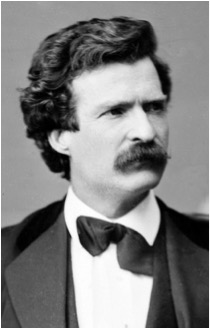
Just as Twain’s stories describe poignantly the division of the nation with regard to slavery and racism, so the story of Missouri tells of a divided people. The state was ground-zero for the slavery issue in the early 1800s, lending its name to the great compromise that many believe forestalled—for better or worse—the Civil War for almost half a century.
On a current map, Missouri still seems somewhat divided. Its two largest cities sit on opposite borders and are shared with their adjacent states. St. Louis, historic gateway to the West, is positioned at the confluence of the Mississippi and Missouri Rivers, its eastern section planted firmly in Illinois. Five hours to the west along Interstate 70, at a point where the Missouri River turns north, lies Kansas City, its western section located in its namesake, Kansas . Both of these cities are more quickly associated with Missouri, however, than with the states that share them, because the larger populations of both are, in fact, in Missouri.
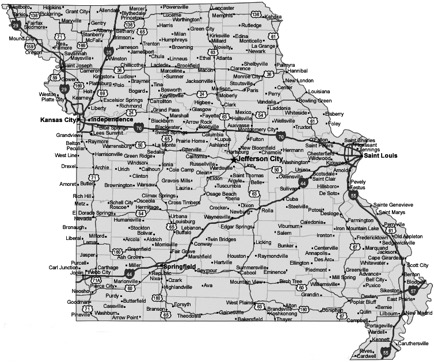
In the southeast corner of the state is its “bootheel,” a section of Missouri that looks like what it is. It represents the property claim of a rancher and prominent citizen of the New Madrid section of Missouri Territory in 1812. His name was John Hardeman Walker, and upon learning that his land was south of the 36° 30’ parallel that would divide Missouri from Arkansas, lobbied Congress successfully to be included on the north side of the border.
Perhaps it is the influence of Mark Twain. Or maybe it is the history of Thomas Hart Benton, Missouri senator who pushed the concept of “Manifest Destiny.” Or his intrepid daughter Jesse, wife of the “American Pathfinder,” John C. Fremont, the man who, as governor of Missouri, freed the slaves of his state before Lincoln produced the Emancipation Proclamation . Whatever it is, even today Missouri calls to mind the American spirit of adventure and exploration, of our national quest for freedom and self-determination, and of the colorful people who made that happen.
Marquette and Marest
The river which we call the Missouri was called “Pekitanoui” by the Algonquian-speaking tribes of the exploration era. Jacques Marquette, whose Illini guides spoke an Algonquian dialect, was the first European to refer to the river this way when he wrote in 1673 that it joins the Mississippi where “so great was the agitation that the water was very muddy, and could not become clear.” For the next half-century the river’s name was spelled and pronounced several different ways: Pee-kee-tan-no, Pee-kee-tol-a-ka, Pecha-tan-oke, and Peckatonica, among others.1 The word Marquette heard from the Illini means “muddy water,” and various forms of it appear in other Algonquian dialects, having the same meaning, and referring to the same river.
Marquette also used the word Missouri on a map he drew during his voyage. The word appears to signify a village on the Pekitanoui River several miles upstream from its convergence with the Mississippi. The village lies at the mouth of another tributary later named “Grand River.” Beginning in the early 1700s Europeans began to refer to Missouri (again with various spellings) as the name of the river, the village at the mouth of the Grand, and the people who lived there. Father Gabriel Marest, a French missionary who lived among the Illini around 1712, is often credited with linking the names “Pekitanoui” and “Missouri,” and with starting the confusion regarding their definitions. He wrote,
“Seven Leagues below the mouth of the Illinois river is found a large river called the Missouri,—or more commonly Pekitanou; that is to say, “muddy water,” which empties into the Mississippi on the West side...it is extremely rapid, and it discolors the beautiful water of the Mississippi...”2
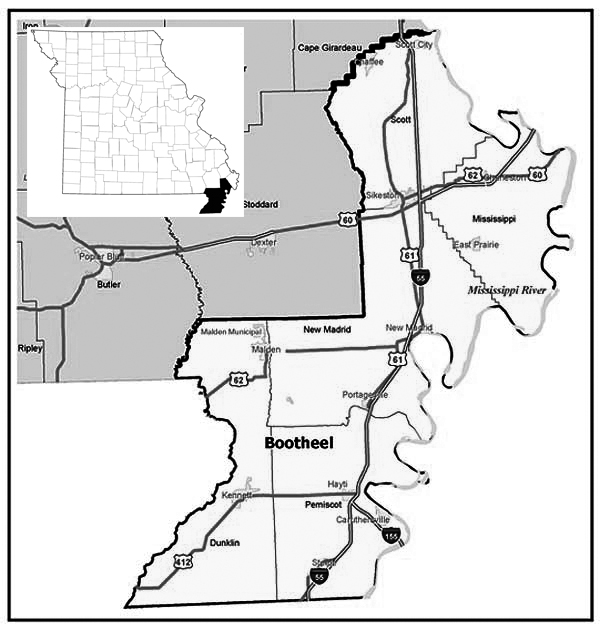
This ambiguous statement leaves open the question of which word bore the definition “muddy water,” but it is among the first records in which the river was called by the name Missouri . It has become clear to historians that Missouri originally referred to the tribe and their village, and only for lack of a better reference, and an unexplained unwillingness to use the Illini word Pekitanoui , began to be used by explorers to name the river as well.
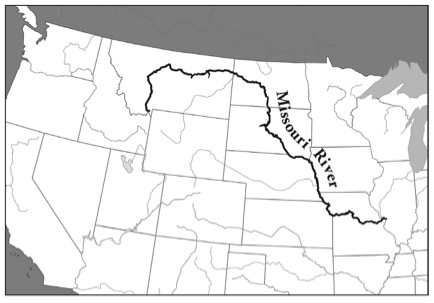
The Tribe
The Missouri were a Siouan tribe closely related to the Oto, Iowa and Winnebago peoples. They called themselves Niutachi or Ne-o-ta-cha meaning “people who live at the mouth of a river.” Some time after contact with Europeans, their numbers were greatly decreased by disease, including whooping cough and smallpox epidemics, and in 1798 the Missouri were further decimated by an attack on their village by Sauk and Fox tribes. The survivors folded themselves into the Kaw, Iowa and Oto tribes, and in 1804 the Oto-Missouris would be the first of several tribes with whom Lewis and Clark would hold a council to introduce the natives of western North America to their “new government.” Today the Oto-Missouri tribe numbers about 1300 and is concentrated in Oklahoma near the town of Pawnee.
As early as 1720 another French missionary named Joseph Ignatius Le Boulanger compiled a dictionary of Algonquian terms in which he records the definition of missouri as “boat” or “canoe.” Later ethnologists recorded the name emoussulia or amassulia as “boatmen” or “canoemen,” and other French explorers sometimes used “les Emissourites” to describe the Indians who lived on the banks of the Missouri River. Father Marquette himself noted in 1670 that the “powerful Nations” who lived along the Missouri did in fact travel in wooden canoes. Thus, the word Missouri came to be defined as “he of the big canoe” or “wooden canoe people” or even “village of canoe people.”
Louisiana
By 1803, when the United States claimed possession of the trans-Mississippi west by virtue of the Louisiana Purchase, the word Missouri was entrenched as the name of the river that flowed into the Mississippi from the west, but whose source was not yet known. St. Louis, founded in 1763, was already a thriving fur-trading post and gaining its imminent status as the gateway to the new U.S. possession. But it was not St. Louis, Missouri. The new lands were not yet an official U.S. territory and had no real political or governmental designation. Congress immediately began to struggle with what to do with this vast tract that nearly doubled the size of the country. Thomas Jefferson initially proposed using it as one big Indian reservation including moving European settlers out, and eastern Indian tribes in. This proposal was short-lived, however, in large part due to objections by French and Spanish settlers in the region, and to the lucrative fur trade emerging in St. Louis, to which white pioneers desperately wanted access.
The whole purchase area began to be called the “District of Louisiana,” which was vaguely divided into two parts. “Lower Louisiana,” which constituted the current state of Louisiana, and “Upper Louisiana” which was the entire remainder of the purchase area, whose specific boundaries were unknown until well after Lewis and Clark returned from their expedition. In 1805 Lower Louisiana was officially separated at the 33rd parallel and renamed the Territory of Orleans , while the upper region took the name Louisiana Territory for its own.
St. Louis was, by now, the unequivocal “gateway to the west” by virtue of its position at the confluence of the two mightiest rivers in the country. The Mississippi was already well-known and heavily used, but the Missouri was known only to disappear into the “Indian Country,” and signified the vast reaches of the new U.S. territory. Lewis and Clark’s celebrated exploration of that river, and their return upon it to national exaltations, helped to thrust the name into prominence, associating it with the promise of a new and bountiful frontier.

The Missouri Compromise
In March of 1807, Merriwether Lewis was made governor of the vast Louisiana Territory. He arrived in St. Louis a year later to assume these duties and among his first acts was to invite Joseph Charless to create the first newspaper west of the Mississippi River. The newsman chose as the name for the publication The Missouri Gazette . Oddly enough, Charless was among the most vocal opponents of elevating the region’s territorial status to statehood, but beginning in 1809, plans were moving forward to do just that.
Missouri’s statehood efforts, which began in earnest around 1816, were seriously delayed by the slavery issue. Missouri had been made a territory without specifically outlawing slavery, and by the time statehood was officially requested in 1818, the U.S.Senate was equally divided—eleven free states and eleven slave states. Neither side would be able to pass a bill admitting a state without votes from the opposing side and Congress was deadlocked.
Finally, in 1820, Senator Henry Clay of Kentucky, proposed a compromise that would admit Missouri as well as Maine—the former a slave state, and the latter free. Clay would go down in history as the “Great Compromiser” for his proposal.
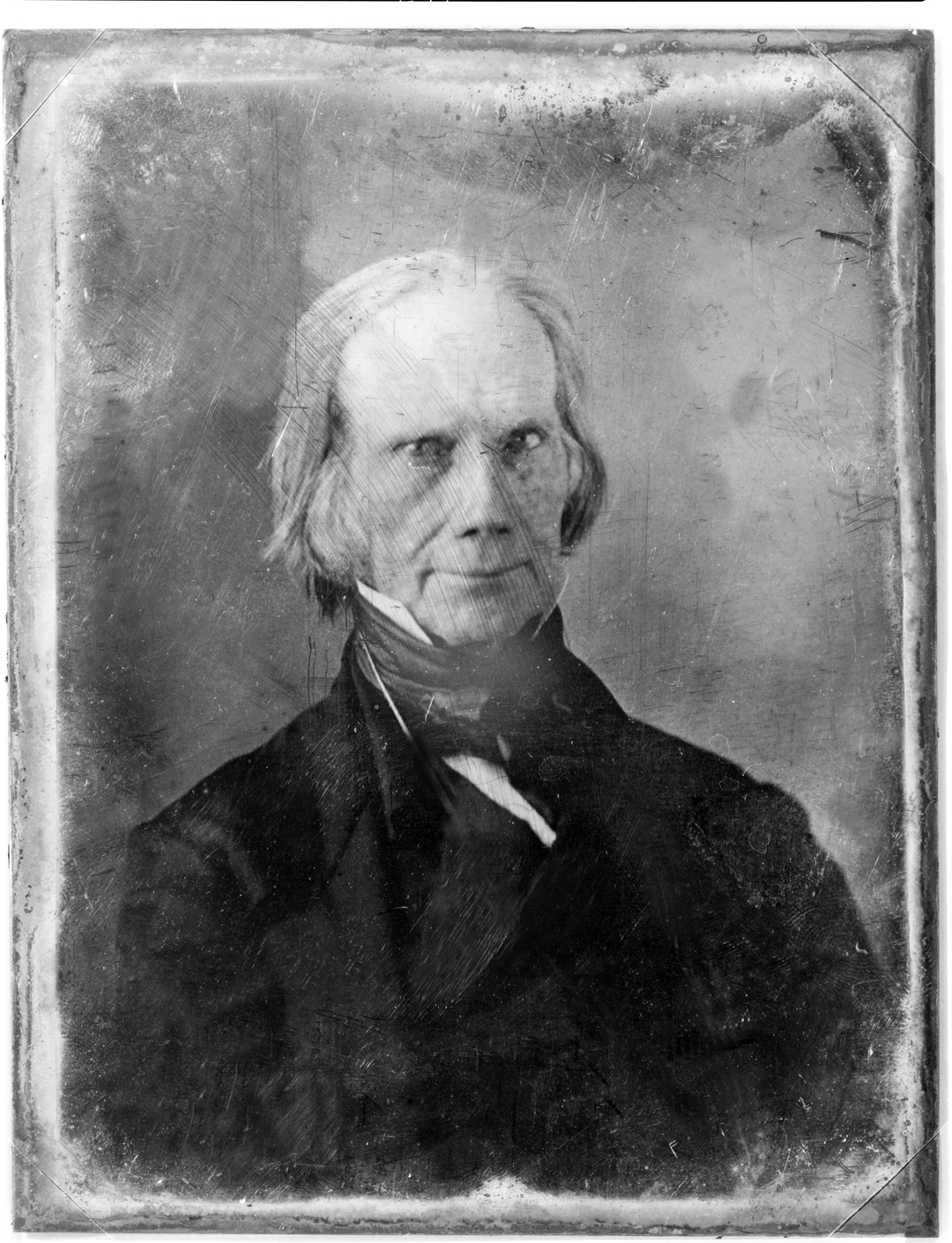
The compromise also provided that no slave states would be admitted to the union north of Missouri’s southern border of 36º 30’, except, of course, Missouri. The Missouri Compromise many argue, postponed the Civil War for forty years, during which time states were paired off and admitted two at a time as if they were entering Noah’s Ark. Thus the status quo was maintained in the U.S. Senate and the deadlock was lifted.
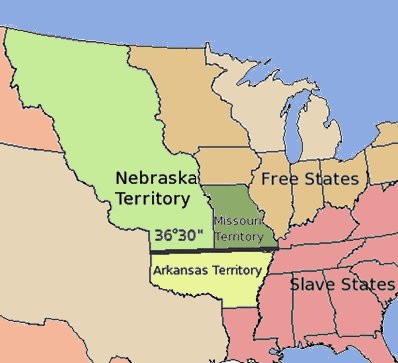
The act was repealed in 1854, and declared unconstitutional in 1857 in the famous Dred Scott case. But it served Missouri’s immediate purpose, and allowed her to enter the union as the 24th state on August 10, 1821, with the official signature of President James Monroe.
You Say Missouree, I say Missouruh
After several years of debates over land claims, slavery, and suffrage, on June 4, 1812, three days after declaring war on England, James Madison signed legislation elevating the Territory of Louisiana to “second-class” government status, which implied eventual statehood. Two months earlier, the Territory of Orleans had been made a state and usurped the name Louisiana , so a new name was needed for the old Louisiana Territory. Missouri , now a popular and dominant name in the region, was rather unceremoniously inserted into the legislation.
However, once the name was adopted as the appellation for the largest territory in the country, a pronunciation debate was touched off. One Missouri historian writes
“The new territorial law also authorized a name change: the Territory of Louisiana became the Territory of Missouri. Henceforth, Missouri was to bear the name of the great river that had done so much to shape its history. All that remained was for the people of the territory and later the state to decide how to pronounce it. Was it ‘Missouruh’ or ‘Missouree’?”3
To the uninvolved, the argument seems a petty one, but the subject of the pronunciation of Missouri has sparked as much, if not more, research as the subject of the derivation of the word itself, and it’s a debate that continues to this day.
In 2002 Matt Blunt, then Secretary of State for Missouri, sponsored an informal poll at the state fair, asking residents which pronunciation they preferred. While the results indicated that “Missouree” was more popular than “Missourah,” the more interesting outcome was the passions which were inflamed by the age-old controversy. The poll sparked letters to editors and the calling of names which were in no way derived from that of the state! Heated tempers aside, however, it appears that Missourians actually love their little debate and do not wish for a resolution—not that there’s any danger of one.
End Notes
1. Vogel, Virgil J., “The Origin and Meaning of ‘Missouri,’” Bulletin of the Missouri Historical Society , April 1960, Vol. XVI, No. 3.
2. Vogel, p. 214.
3. Foley, William E., The Genesis of Missouri: From Wilderness Outpost to Statehood (Columbia, 1989), p. 223.